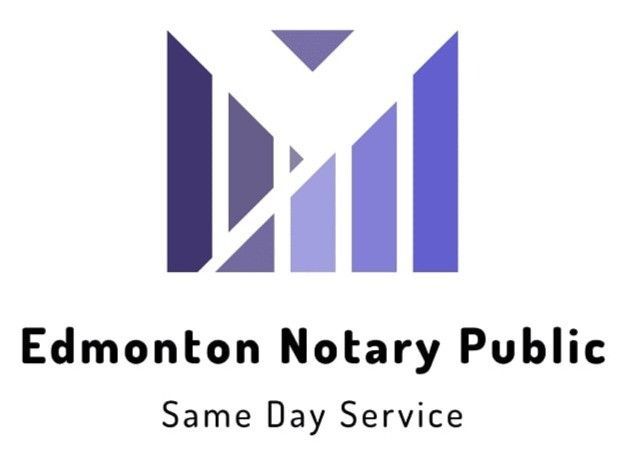Understanding Statutory Declarations: What You Need to Know
In the legal and administrative world, some matters don’t require courtroom proceedings or formal litigation-but they still need verified, truthful documentation. That’s where a
statutory declaration comes in. Whether you're dealing with a lost passport, confirming residency, or verifying personal details for government
services, these legally binding statements are often the go-to solution.
A statutory declaration allows someone to affirm that something is true, knowing it has legal weight. It’s a powerful tool that helps avoid drawn-out legal procedures while ensuring accuracy and accountability in personal, professional, or official dealings.
This guide will explain exactly what a statutory declaration is, why you might need one, and how to create one properly-including when to involve a notary public or commissioner of oaths.
What Is a Statutory Declaration?
A statutory declaration is a written statement of fact voluntarily signed and declared to be true by the person making it. The key detail is that this statement is sworn or affirmed in the presence of a legal authority, such as a notary public or commissioner of oaths.
Unlike an affidavit, which is usually tied to court proceedings, a statutory declaration is more commonly used in civil or administrative situations. However, both are sworn documents that carry legal consequences if false.
These declarations are used to confirm facts in the absence of other proof, and their legal acceptance is recognised across public institutions, private businesses, and government departments.

When Is a Statutory Declaration Required?
Statutory declarations are useful when formal proof is needed but there are no standard documents or official records available. Common use cases include:
● Verifying identity or personal details (e.g., date of birth, residency)
● Confirming marital status for benefit or immigration purposes
● Declaring a change in name not done through a formal name change certificate
● Replacing lost official documents (such as a will or passport)
● Declaring common-law status
● Confirming relationship or custody arrangements
● Swearing business-related facts (e.g., ownership, operations, or non-criminal record for licensing)
Different departments and institutions may require different wording or formats, so it's crucial to ensure the document meets the specific requirements of the body requesting it.
Legal Standing of a Statutory Declaration
A
statutory declaration is a legally binding document. Making a false statement in one is a serious offence under theCriminal Code, punishable by fines or imprisonment. Because of this, it's vital to be truthful and accurate when making one.
These documents are governed federally by theCanada Evidence Act, and each province may also have specific legislation or processes for witnessing and processing declarations. Regardless of where you're located, once witnessed and signed properly, the declaration holds legal authority and can be used in official proceedings.

Who Can Witness a Statutory Declaration?
To be legally valid, a statutory declaration must be signed in the presence of one of the following:
● A notary public
● A commissioner of oaths
● A justice of the peace, lawyer, or other authorised officer depending on jurisdiction
These professionals are legally recognised to administer oaths and affirmations. They will check your identification, review the declaration for completeness, and formally witness your signature.
In some provinces, virtual witnessing is permitted under specific conditions, particularly when in-person appointments are not practical. However, always check with the authority requesting the declaration to ensure virtual signing is acceptable.
How to Draft a Statutory Declaration
Although a statutory declaration doesn't require complex legal drafting, it must follow a particular format to be considered valid.
A standard statutory declaration includes:
- A heading or title: Clearly stating “Statutory Declaration”.
- Declarant’s full name and address: The person making the declaration.
- Statement of facts: A concise and accurate description of what is being declared.
- Statement of affirmation: Confirming that the declarant solemnly declares the5. 6. statement to be true.
- Signature of the declarant: Signed in the presence of the witnessing official.
- Signature, title, and seal of the witness: Completed by the notary public or commissioner of oaths.
Here's a simplified example:
I, Jane Doe, of 123 Main Street, declare that I have lived at this address continuously since January 2015. I make this solemn declaration conscientiously believing it to be true and knowing that it is of the same legal force as if made under oath.
Then comes the space for signatures and dates.
It is always wise to ask a legal professional or notary to review your draft before making the
declaration official.
Common Mistakes to Avoid
When preparing or submitting a statutory declaration, avoid the following pitfalls:
● Failing to have it witnessed properly
Signing without an official present invalidates the document.
● Vague or incomplete statements
The declaration must be clear and unambiguous.
● Incorrect format or missing legal language
If it doesn’t follow formal structure, it may be rejected.
● Using it for the wrong purpose
A statutory declaration is not a substitute for contracts or affidavits where specific formats are required.
Being precise and thorough, and getting professional guidance, ensures your declaration serves its intended purpose.
Statutory Declaration vs Affidavit
Although similar in function, the two are not interchangeable.
●Affidavits are typically used in legal or court-related processes.
●Statutory declarations are more often used in civil and administrative contexts.
● Both must be sworn and witnessed, and both carry penalties for falsehood.
Understanding which document is appropriate for your situation is essential. If you're unsure, a lawyer or notary can help advise on the correct option.

Can You Make a Statutory Declaration Yourself?
You can draft your own declaration, but you cannot finalise it alone. It must be signed in the presence of a legal authority, or it won’t be considered valid.
Using online templates can be helpful for structure, but professional input ensures that the wording is accurate and relevant for the organisation or authority you're submitting it to.
Why Work with a Notary?
Notaries offer more than just witnessing. They ensure the entire process is legally sound and can often assist in drafting or modifying the declaration to suit your needs. Many notary offices also offer same-day appointments, digital copies, and secure storage options.
Working with a notary gives you peace of mind that your document is both complete and enforceable.

Final Thoughts: When and Why to Use a Statutory Declaration
Statutory declarations are an essential tool for affirming facts without needing court orders or legal disputes. Whether you're proving your identity, clarifying your status, or addressing administrative requirements, they offer a recognised and efficient solution.
Understanding how these documents work, who can help you complete them, and what mistakes to avoid ensures you get it right the first time. Always consult with a qualified notary or legal advisor to guide you through the process with clarity and confidence.
Contact us today.



